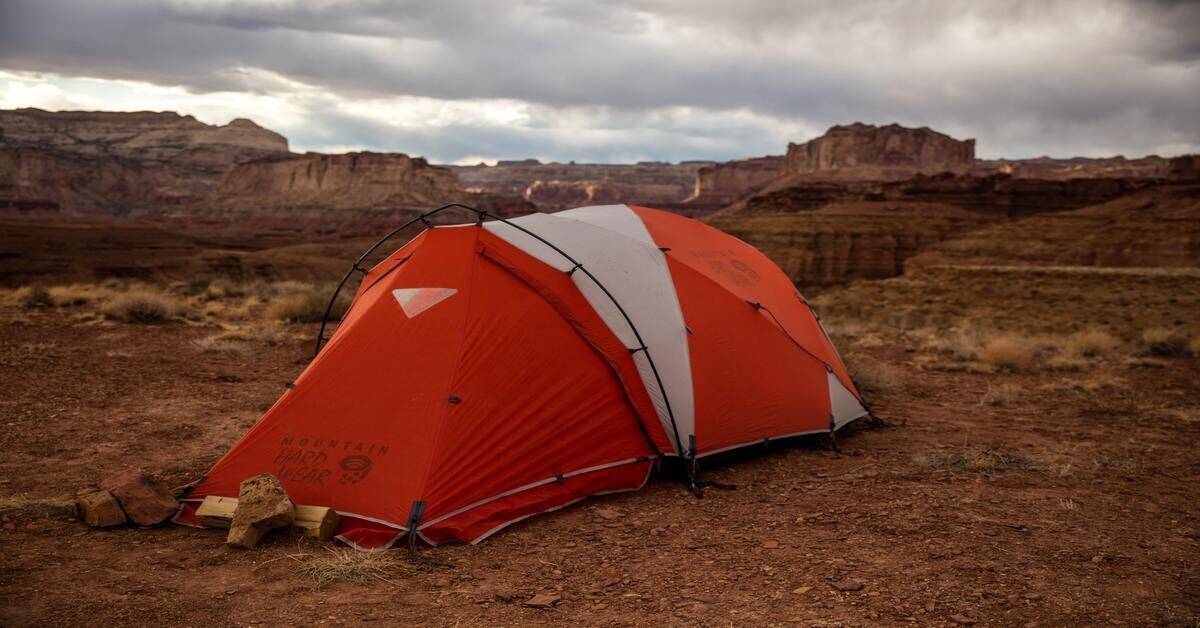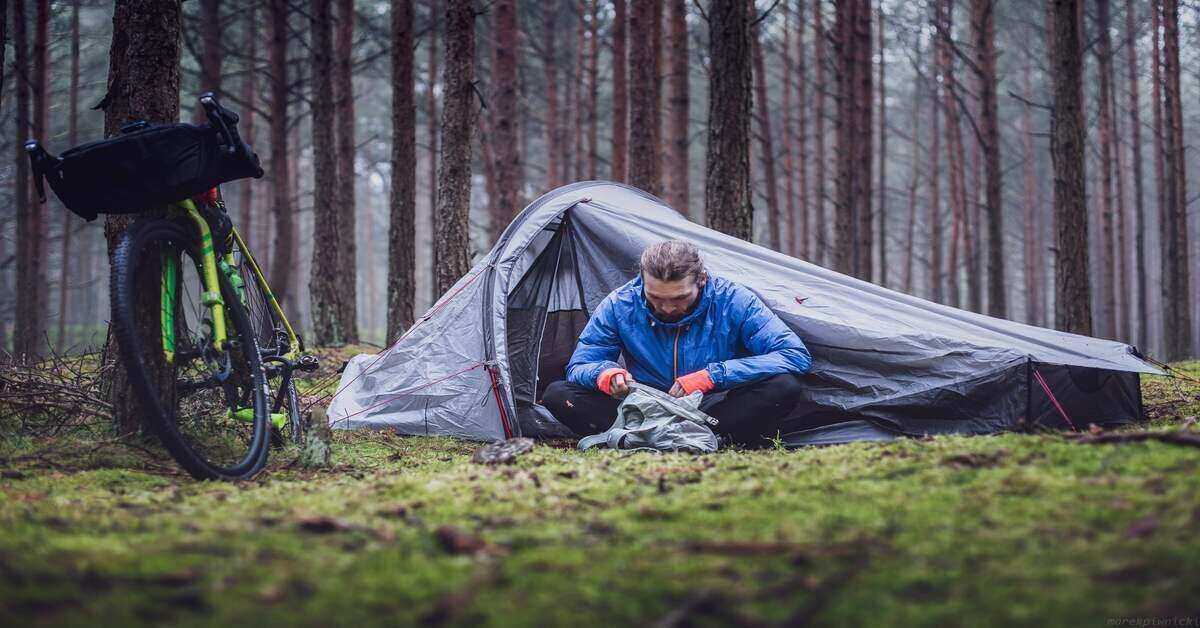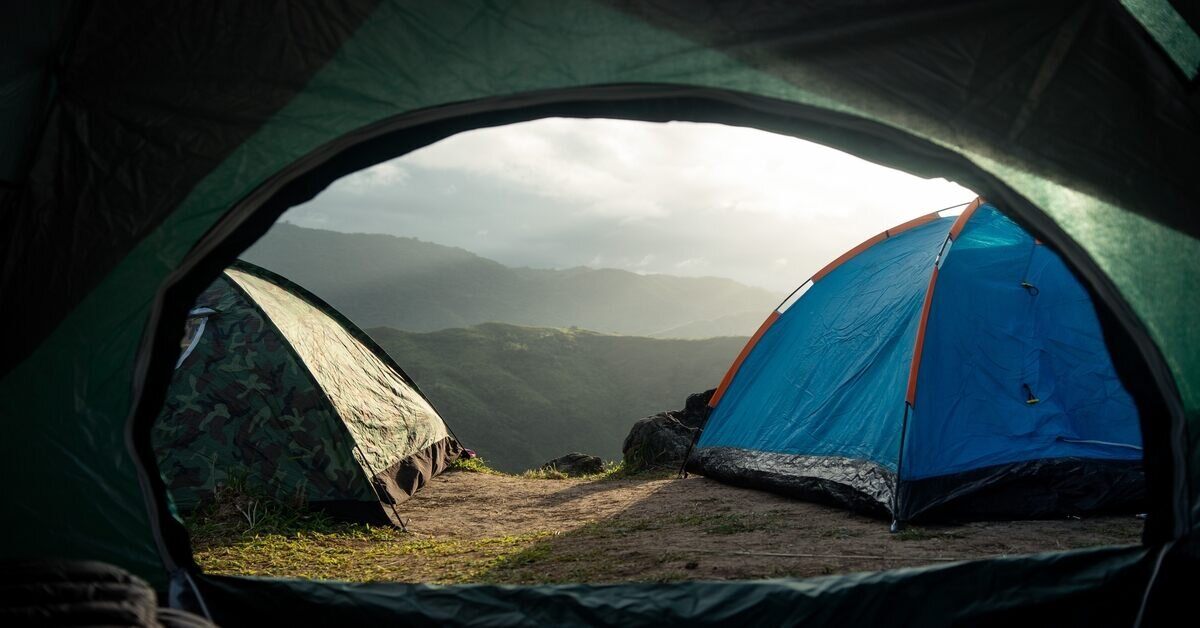Tent hygiene is important while you are camping. Not only do you want to make sure that the tent has no mold, but there is also something about sleeping in a clean place that makes for a great night’s sleep! A little extra attention to your tent will make it even more comfortable to use and reuse again next time. The good news is that cleaning your tent doesn’t have to be difficult, and you don’t have to break the bank on expensive cleaners. In this article, we discuss a few tips for how to clean your tent at camp or in your backyard.
But first, let’s talk a little bit about mold.
What is mold and why is it so dangerous to humans?
Mold, as described by the U.S. Environmental Protection Agency (EPA), are certain types of fungus that can grow in dark or damp conditions, such as a tent that isn’t cleaned properly after extended use. Mold usually grows when there is excess material, moisture, or heat around. It can grow on food, clothes, and just about anything else that has the right conditions for it.
Some molds produce mycotoxins which would cause an allergic reaction if inhaled. These allergies may lead to a number of health problems if the allergens continue to be breathed in.
There have been reports where prolonged exposure to pesticides and household cleaners gave people respiratory problems after they had come into contact with the toxic molds that were also in the house.
How does mold get into clothing and things?
Mold needs moisture, dirt or dust, and warmth to start growing on other materials. If there is an excess buildup of stagnant water in your tent from the heat, or if it is stored in a place where there is no circulation of air, mold can start to grow.
How to clean a tent
For most tents, the easiest way to make it look and feel clean again is by doing a thorough inspection, and to remove any obvious dirt. Then dry the tent out in sunlight because UV rays kill bacteria which can cause mold or mildew to grow inside your camping equipment. If you’re looking for a quicker option that will require little effort on your part, there are multiple commercial cleaning products you can use.
A mild detergent like dish soap, or laundry detergent, and a scrub brush will do the trick. You can also use bleach for tougher stains but be sure to air out the tent thoroughly before you start using it again. This is because bleach kills most organic matter including all microbes which is a big no-no when it comes to camping tents and sleeping bags.
How to clean a tent with mold
First, ensure you can remove the mold without damaging your tent or any other gear inside it. If there is cloth or canvas material used in anything else that is stored in the tent with the mold, then you should throw these things away as soon as possible because of how toxic the spores could be to humans.
Related: Best gifts for outdoor enthusiasts
If you still want your tent, but it is covered in mold, then you will need to clean it before returning it to your gear arsenal. The first thing you should do is wipe down the outside of the tent with a damp cloth and mild soap. Once that has been done, you should take out all of the things that are inside the tent and give it a good spray down with your hose. Make sure to get all of the mold off in all areas, including the floors of the tent.

If you still have problems with mold after cleaning, use white vinegar to kill mold spores on clothes or other materials. Always wear rubber or latex gloves when handling these chemicals so that you do not have to touch the mold itself.
How to clean a tent that smells
If your tent happens to smell after a camping adventure, put the following mixture of fragrances inside to help freshen the air:
– A cup of vinegar
– A handful of coffee grounds
– Half a cup of baking soda
– A few drops of your favorite essential oils
Stir all these items together in a bowl, and then put them inside the tent to help with cleaning it. If you do not have any towels big enough to fit over the inside of the tent while this mixture is cooking or steeping, then you can also place some cotton balls into the mixture. And if the smell of vinegar is too powerful for you, then you can also replace it with lemon or orange juice.
How to clean a tent that smells and has mold
Now if your tent has mold and smells, then cleaning it can be a little more challenging than just wiping down the exterior. If your tent is canvas, then you will need to use a spray bottle and some vinegar in order to do this. The vinegar should be sprayed all over the moldy areas of the tent as well as any other areas that could have picked up mold or odor during camping trips. Leave it on for about 15 minutes and then wipe off with a towel. If you do not have enough room to allow your tent to dry well, then hang it in an area with good ventilation.
If your tent is made out of waterproof material, then you will not want to do this since it can compromise the PVC coating. Using warm water and soap should do well enough in this case as long as you let everything air dry up before packing it back up and heading home.
How often should you clean a tent?
The amount of mold that is present is going to determine how often you will need to clean it. Since mold can grow and spread extremely rapidly, it may be a good idea to remain vigilant in cleaning your tent after each camping trip.

How well do you know your tents?
According to the National Outdoor Leadership School (NOLS), there are four different types of tents:
- Tents made of heavy canvas or cotton: Require the most cleaning. They do not breathe very well and can hold in moisture, mold, and bacteria much more easily than other tent fabrics.
- Tents made of synthetic fabrics with some vents and breathable mesh points: Much easier to clean than canvas tents. With all these factors, you could go as far as only wiping down the exterior after camping trips just in case mold has begun to grow on the inside.
- Tents made entirely of waterproof material: Easier to clean than canvas tents, but they can still hold in mold and bacteria if not dealt with properly.
- Tents made with a combination of both canvas and synthetic materials: These tents should require minimal cleaning since they breathe better than all other options listed above but will still hold in mold if not dried properly after use.
Tips for how to prevent future mold growth in your tent
If you are storing a tent in an area where the temperature is not optimal for storage (meaning it does not get enough air circulation) or if there are chances of dampness in the area, then have a dehumidifier present to prevent mold growth or consider storing your tent in Ziploc bags.
This will help maintain its freshness and prevent mold growth. If the tent is already covered in mold, then you might have to replace it if it cannot be cleaned well enough.
Related: what to wear hiking in the summer
How to clean your tent from dirt & dust
If you are not worried about cleaning your tent of odors or mold but just would like to clean it before storing it, then removing the dust and debris shouldn’t be an issue. Take a damp cloth and wipe down all surfaces of the tent. Be sure that you dry the tent completely before storing it. This will make your storage of tent materials much easier!

How to clean a tent without damaging the outside fabric
The thing that is important when cleaning any tent is to make sure that you do not accidentally damage the outside of it while trying to remove things like mold. Most tents have a very thin fabric that is relatively easy to damage if you are not careful with your cleaning supplies.
-Clean the outside of the tent with a damp, but not wet soapy sponge, scrubbing any dirt marks and stains off of it as best you can. It’s important for the tent to be somewhat damp as this will help you to scrub off whatever is on the outside of the tent without causing damage to it.
-Use a hose to spray the inside of the tent and all of the camping gear that is inside it. Allow this to sit for a few minutes then scrub off any big pieces of mold or mildew that may be on there with your sponge.
-Run an old toothbrush around the zippers, seams, and tie holes in order to remove any dirt or debris.
-Use a brush that is designed to scrub the ground around your tent, if you have one, to scour the ground around it where you place it down so that whatever is on the ground doesn’t end up inside of the tent where you are sleeping.
-Once you’ve cleaned your tent of all dirt and debris inside of it, you’ll want to use a damp rag to wipe the outside of it down.
Do not forget the windows
-Lastly, if you have some windows in your tent, you need to clean these as well. A good option is to place plastic over them so they do not get dirty while you are trying to clean the outside of the tent.
-Use a hose to spray the outside of the tent down making sure to remove any excess water with your towel or rag.
-Allow all of the equipment that was inside of the tent to dry out before packing it back up and storing it in its place until you use it again. This will help to prevent mold from growing on anything inside of the tent when you are not using it.
Why you should get rid of the old sleeping bag inside the tent
Some people think that it is okay to use the old sleeping bag after a long weekend of camping. The truth is that mold and mildew may already grow in there. If you do not want this smell to go inside your new tent, then you should get rid of that old sleeping bag as soon as possible.
If you are not sure how to do that, then here are some instructions:
* Turn it inside out and aerate it as much as possible. You can hang it in the sun if it is available. Hanging your sleeping bag after a long weekend of camping can help remove some bad smell from the tent.
* Roll it as tight as you can. Take a rope and tie the ends together to create one single roll.
* Put it inside a plastic bag after rolling it up. The smell may still go outside, but this is more secure than loosely binding the sleeping bag with rope or anything similar.
With proper cleaning and storage of your camping items, you may be able to use them for a long time. However, a lot of people tend to forget to clean their items. They think that the smell will go away naturally. But this is not what usually happens.

Some experts even suggest spending more money on higher-quality sleeping bags and tents. If you do not want to spend so much money on these camping materials, then take good care of them every time you go out on an adventure.
Why is a tent not the best location for cleaning your clothes?
A lot of people would like to wash their clothes in their tent because they think that it is easier and more convenient. However, this habit can introduce mold and mildew inside your tent when you do so. Consider washing your clothes outside your tent before moving them inside.
Some people also opt to shower in the woods, especially if they are camping for a long time. This can lead to mold and mildew problems as well. If you want to go out and take a shower but do not want to use the bathroom area of the campground, then consider showering in a nearby lake or stream instead.
Why is it not a good idea to keep your tent in the basement?
The fact that you want to keep your tent at home does not mean that you should store it in your basement. The basement may be the worst place to store any camping equipment because of moisture problems. You might want to think about this before storing your tent in the basement, depending on its quality. It might get moldy if you do so.
Can you use a washing machine to clean your tent?
Washing machines are convenient for many things, including clothes and blankets. However, you shouldn’t use them to wash your sleeping bag or tent as they will damage the fabric. Always keep this in mind if you want to clean your tent properly.
Knowing how to clean a tent one of the most important skills for outdoor lovers. It not only enables you to not only enjoy your night but also increases the lifespan of your tent. Did you love this article? Please leave a comment below!

